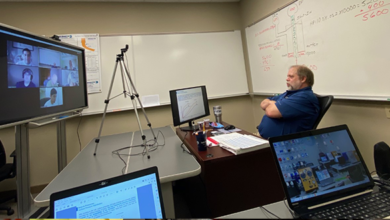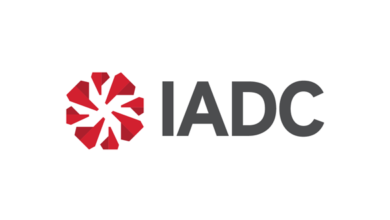Drilling & Completion Tech Digest
Siemens to modernize drilling-drives package for jackup

Siemens is working to modernize a complete and integrated drilling-drives lineup, including auxiliaries and controls, that will be installed on a jackup drilling rig in the Middle East.
The work is being done under a contract with Arabian Drilling Company, and delivery of the new system is planned for early 2021.
The contract includes engineering, design, manufacturing and delivery of the fully integrated modernization based on Siemens’ environmentally friendly BlueDrive technology. The Siemens solution, known as Master2Blue, will use the footprint, cable network and communication principles of the existing system, enabling quick, modular-style installation, commissioning and startup. The system is a DC power grid that includes power electronics, controls and cooling of 10 integrated variable speed drives.
“As the reactivations of stacked and un-utilized drilling rigs are increasing, Siemens stands fully ready to modernize offshore rigs and ships to make them safer and more energy efficient,” said Thomas Steenberg, Siemens Offshore Solutions, Business Development Director.
“By using the latest drilling and propulsion drives technology, customers can assure their rigs and ships remain at the highest level of supportability for many years to come.”
Collaboration aims to accelerate subsea digitalization
Subsea 7’s Life of Field business unit, i-Tech7, and Shell International E&P have entered into a collaborative technology agreement to accelerate subsea digitalization, initially for a period of five years starting in Q4 2019.
The agreement will help to fast-track innovation and streamline the adoption of applied technologies in areas such as marine robotics, advanced sensing, artificial intelligence and autonomous systems to address the industry’s challenges to improve safety, cost efficiency and sustainability.
“Digitalization is core to our strategy, and we are continuing to expand our digital capability and offering, to strengthen our market position and deliver enhanced value to our customers,” Steve Wisely, Senior Vice President for i-Tech 7, said.
“Digitalization will support Shell to become a world-class investment case by improving our productivity, reliability and performance, as well as reducing the costs of our assets,” Christian George, Shell Vice President of Wells, Deep Water and Surface Engineering Technology, said. “We are delighted to extend our strong operational partnership with Subsea 7’s Life of Field business unit into the area of technology development.”
Sealant helps to repair cement packer design
CannSeal recently repaired an unconventional cement packer design, 4 ½ in. in 9 5/8 in. with limited cement. The company’s technology reduced a gas leak to within acceptable limits, thereby facilitating development of an additional reservoir.
In order to unlock additional accumulation, the wellbore was sealed off and the A-annulus was filled with cement above the top of the additional reservoir. Two long formation, or reservoir sections, were then perforated below the estimated top of cement (TOC) in the A-annulus. When production started, the A- and B-annuli developed gas influx issues. Conventional methods of sealing could not be used due to the risk of filling the reservoir with sealant through the perforated sections.
The cement below the estimated A-annulus TOC was of unknown quality, and the 4 1/2-in. tubing was placed inside the 9 5/8-in. casing. Perforating through a thick cement sheet, while not damaging the outer casing on the low side, was vital.
The CannSeal IntegritySeal was run on wireline to perforate and inject epoxy in the cement above the top perforation interval. The high viscous sealant forms a doughnut around the tubing in an open void or fills large channels in a poor cement matrix. This process creates a plug independent of annular condition.
The delivery tool is fitted with a g-sensor, which has the ability to show the tool’s relative orientation. As a result, eccentric centralizers were used to point the perforation gun in the desired direction. This allows selective penetration with max reach topside to occur, while not damaging the second casing in the eccentric annulus. A heater tool was used to increase the epoxy materials cross linking, establishing a strong plug.
Three epoxy injections were placed in close proximity and completed. The heater tool was deployed to strengthen the plug material, enabling it to withstand high delta pressure in an anticipated large open void in the event there was no cement. Orientation of the tool was successful despite a low clearance, making the concept viable for larger casings in the future.
The aim of lowering the gas leak rate was achieved. A month after the treatment, the situation was reported to be similar, with the pressure build reduced to a minimum.




